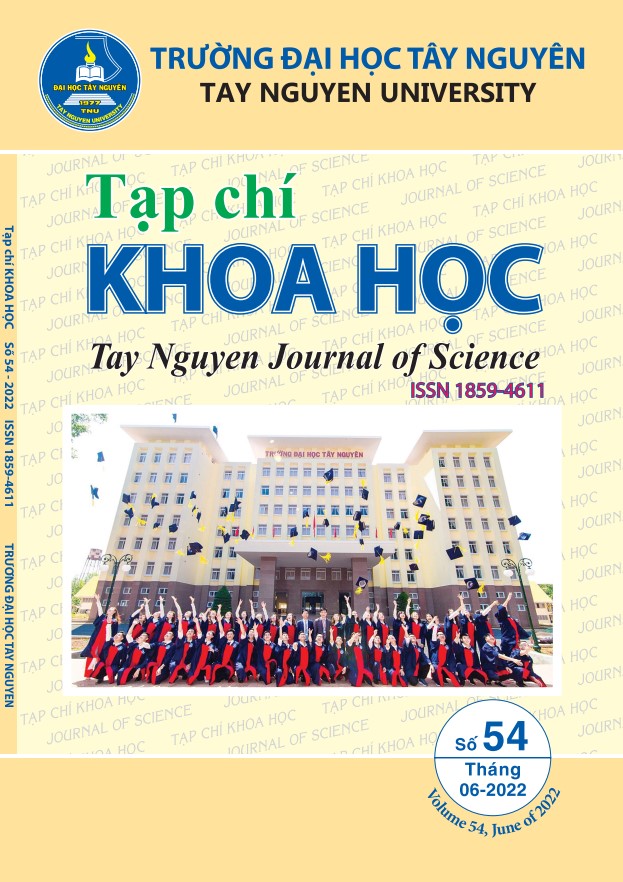Antioxidant and antiviral activity of common polyphenols against influenza A virus
Main Article Content
Antioxidant and antiviral activity of common polyphenols against influenza A virus
Tóm tắt
Herein, we compared the antioxidant activity, cytotoxicity, and antiviral activity of ten common phenolic acids and flavonoids which were naturally occurred in many plants and by-products sources. Antioxidant activity was analyzed using 1,1-diphenyl-2-picrylhydrazyl (DPPH) and 2,2′-azinobis (3 ethylbenzothiazoline-6-sulfonic acids) (ABTS) radical-scavenging activity, while cytotoxicity and antiviral effects of the polyphenols were evaluated using MDCK cells line model. The results showed that different phenolic acids and flavonoids showed a significant difference in antioxidant activities as well as cytotoxicity. Amongst compounds tested, pyrogallol and catechin showed higher DPPH radical scavenging ability, while ellagic acid and quercetin were the higher ability for ABTS assay. Furthermore, our results indicated that the antiviral activity potential varied significantly among polyphenols, that several compounds including gallic acid, quercetin, rutin and vanillic acid were a remarkable inhibited viral infection.
Article Details
Tài liệu tham khảo
- Celep, E., Aydin, A. and Yesilada, E. (2012). ‘A comparative study on the in vitro antioxidant potentials of three edible fruits: Cornelian cherry, Japanese persimmon and cherry laurel’, Food and Chemical Toxicology. Elsevier Ltd, 50(9), pp. 3329–3335. doi: 10.1016/j.fct.2012.06.010.
- DIng, Y. et al. (2017). ‘Antiviral activity of chlorogenic acid against influenza A (H1N1/H3N2) virus and its inhibition of neuraminidase’, Scientific Reports. Nature Publishing Group, 7(March), pp. 1–11. doi: 10.1038/srep45723.
- Friedman, M. (2007) ‘Overview of antibacterial, antitoxin, antiviral, and antifungal activities of tea flavonoids and teas’, Molecular Nutrition and Food Research. doi: 10.1002/mnfr.200600173.
- Gaikwad, K. K., Singh, S. and Lee, Y. S. (2017) ‘A new pyrogallol coated oxygen scavenging film and their effect on oxidative stability of soybean oil under different storage conditions’, Food Science and Biotechnology, 26(6), pp. 1535–1543. doi: 10.1007/s10068-017-0232-x.
- He, W. et al. (2011) ‘Anti-influenza virus effect of aqueous extracts from dandelion’, Virology Journal. BioMed Central Ltd, 8(1), p. 538. doi: 10.1186/1743-422X-8-538.
- Huang, S.-J., Tsai, S.-Y. and Mau, J.-L. (2006) ‘Antioxidant properties of methanolic extracts from Agrocybe cylindracea’, LWT - Food Science and Technology, 39(4), pp. 379–387. doi: 10.1016/j.lwt.2005.02.012.
- Ju, H. et al. (2017) ‘Inhibitors of Influenza Virus Polymerase Acidic (PA) Endonuclease: Contemporary Developments and Perspectives’, Journal of Medicinal Chemistry, 60(9), pp. 3533–3551. doi: 10.1021/acs.jmedchem.6b01227.
- Lee, J.-H. et al. (2016) ‘Antiviral Effects of Black Raspberry (Rubus coreanus) Seed and Its Gallic Acid against Influenza Virus Infection’, Viruses, 8(6), p. 157. doi: 10.3390/v8060157.
- Lin, D. et al. (2016) ‘An overview of plant phenolic compounds and their importance in human nutrition and management of type 2 diabetes’, Molecules, 21(10), p. 19. doi: 10.3390/molecules21101374.
- Re, R. et al. (1999) ‘Antioxidant activity applying an improved ABTS radical cation decolorization assay’, Free Radical Biology and Medicine, 26(9–10), pp. 1231–1237. doi: 10.1016/S0891-5849(98)00315-3.



